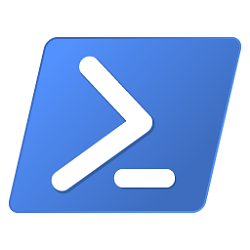How to Check PowerShell Version in Windows
Windows PowerShell is a task-based command-line shell and scripting language designed especially for system administration. Built on the .NET Framework, Windows PowerShell helps IT professionals and power users control and automate the administration of the Windows operating system and applications that run on Windows.
This tutorial will show you how to check the current version of PowerShell in Windows 7, Windows 8, and Windows 10.
PowerShell version history:
PowerShell version Details PowerShell 1.0 PowerShell 1.0 was released in November 2006 for Windows XP SP2, Windows Server 2003 SP1 and Windows Vista. It is an optional component of Windows Server 2008. PowerShell 2.0 PowerShell 2.0 is integrated with Windows 7 and Windows Server 2008 R2 and is released for Windows XP with Service Pack 3, Windows Server 2003 with Service Pack 2, and Windows Vista with Service Pack 1. PowerShell 3.0 PowerShell 3.0 is integrated with Windows 8 and with Windows Server 2012. Microsoft has also made PowerShell 3.0 available for Windows 7 with Service Pack 1, for Windows Server 2008 with Service Pack 1, and for Windows Server 2008 R2 with Service Pack 1. PowerShell 4.0 PowerShell 4.0 is integrated with Windows 8.1 and with Windows Server 2012 R2. Microsoft has also made PowerShell 4.0 available for Windows 7 SP1, Windows Server 2008 R2 SP1 and Windows Server 2012. PowerShell 5.0 Windows Management Framework (WMF) 5.0 RTM which includes PowerShell 5.0 was re-released to web on February 24, 2016, following an initial release with a severe bug. Key features include OneGet PowerShell cmdlets to support Chocolatey's repository-based package management and extending support for switch management to layer 2 network switches. PowerShell 5.1 It was released along with the Windows 10 Anniversary Update on August 2, 2016, and in Windows Server 2016.
A preview for PowerShell 5.1 was released for Windows 7, Windows Server 2008, Windows Server 2008 R2, Windows Server 2012, and Windows Server 2012 R2 on July 16, 2016, and was released on January 19, 2017.PowerShell 5.1 is the first version to come in two editions of "Desktop" and "Core". The "Desktop" edition is the continuation of the traditional Windows PowerShell that runs on full .NET Framework stack. The "Core" edition runs on .NET Core and is bundled with Windows Server 2016 Nano Server.
This was the final version of PowerShell made exclusively for Windows.PowerShell Core 6.0 PowerShell Core 6.0 was first announced on 18 August 2016, when Microsoft unveiled PowerShell Core and its decision to make the product cross-platform, independent of Windows, free and open source. It achieved general availability on 10 January 2018 for Windows, macOS and Linux. It has its own support lifecycle and adheres to the Microsoft lifecycle policy that is introduced with Windows 10: Only the latest version of PowerShell Core is supported. Microsoft expects to release one minor version for PowerShell Core 6.0 every six months.
The most significant change in this version of PowerShell is the expansion to the other platforms. For Windows administrators, this version of PowerShell is devoid of any major new features. In an interview with the community on 11 January 2018, the PowerShell team was asked to list the top 10 most exciting things that would happen for a Windows IT professional who would migrate from Windows PowerShell 5.1 to PowerShell Core 6.0; in response, Angel Calvo of Microsoft could only name two: cross-platform and open-source.PowerShell Core 6.1 PowerShell Core 6.1 was announced on 13 September 2018. This marks the second supported release of PowerShell Core, the open-source edition of PowerShell that works on Linux, macOS, and Windows.
Here's How:
1 Open PowerShell.
2 Copy and paste either command below into PowerShell, and press Enter.
$PSVersionTable
OR
Get-Host | Select-Object Version
3 You will now see the current version of PowerShell. For example: 5.1.18329.1

That's it,
Shawn
Related Tutorials
- How to Open Windows PowerShell in Windows 10
- How to Open Elevated Windows PowerShell in Windows 10
- How to Enable or Disable Windows PowerShell 2.0 in Windows 10
- How to Add 'Open PowerShell window here' context menu in Windows 10
- How to Add 'Open PowerShell window here as administrator' context menu in Windows 10
- Enable or Disable Legacy Console for Command Prompt and PowerShell in Windows 10
- How to Install PowerShell Core on Windows
Check PowerShell Version in Windows

Check PowerShell Version in Windows
How to Check PowerShell Version in WindowsPublished by Shawn BrinkCategory: General Tips
09 Dec 2020
Tutorial Categories


Related Discussions



